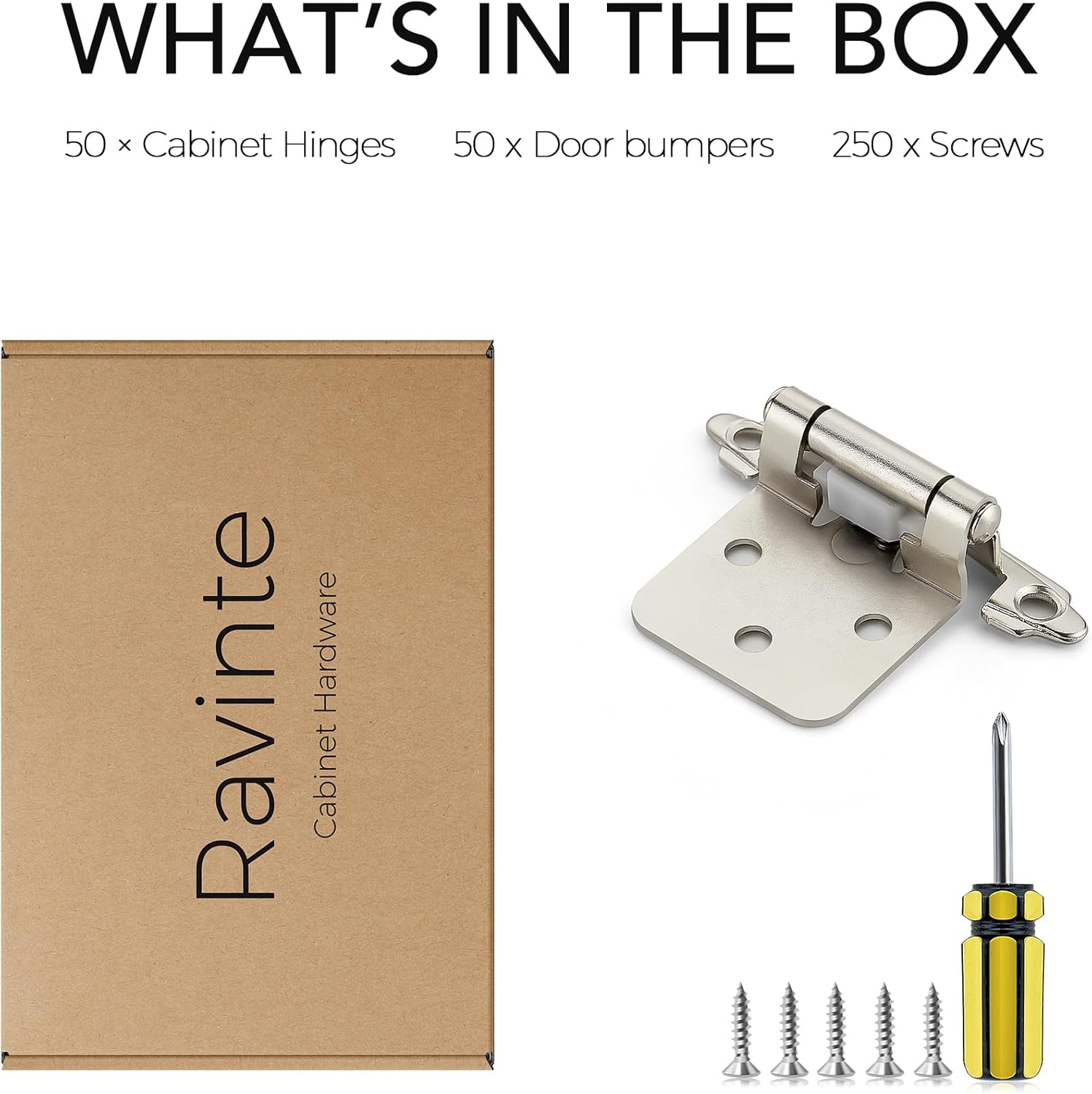






Ultimate Guide to Choosing Ravinte Cabinet Hinges: Quality and Functionality
When it comes to home improvement, kitchen renovations often take center stage. One critical component of any kitchen remodel is the cabinetry. Among various elements defining your cabinets, the hinges play a pivotal role, specifically the Ravinte cabinet hinges. This comprehensive guide will walk you through the benefits, types, installation tips, and much more related to these hinges, ensuring you make a well-informed decision.
What are Ravinte Cabinet Hinges?
Ravinte cabinet hinges are premium hardware solutions designed for face frame cabinets. Their designs blend functionality with aesthetic appeal, ensuring your cabinets not only operate smoothly but look good doing it. Made from heavy-duty metal, these hinges are built for durability, making them a popular choice among homeowners and contractors alike.
Why Choose Ravinte Cabinet Hinges?
Choosing the right hinges can impact your cabinet’s functionality and lifespan significantly. Here’s why Ravinte stands out:
1. Durable Material
Made from 1.5mm thick heavy-duty metal, Ravinte hinges ensure a sturdy connection. The robust build means they can endure daily use without wearing out, providing long-term reliability.
2. Easy Installation
Installation concerns often deter homeowners from DIY projects. Thankfully, Ravinte hinges are designed for simplicity. With no mortising required, they come with Satin Nickel screws for straightforward installation.
3. Self-Closing Feature
The self-closing feature is a game-changer. With built-in spring mechanisms, these hinges allow your cabinets to close automatically and quietly when pushed gently. This functionality reduces noise and prevents slamming, keeping your kitchen serene.
4. Versatility
Ravinte hinges are suitable for a variety of cabinet styles, especially half-overlay and traditional cabinet door hardware. However, they are not compatible with inset cabinet doors, so it’s crucial to assess your cabinet type before purchasing.
5. Modern Aesthetic
With their matte Satin Nickel finish, these hinges not only enhance functionality but also offer a modern touch to your cabinetry, making them visually appealing.
How to Choose the Right Ravinte Cabinet Hinges?
Selecting the right type of hinge for your kitchen involves various considerations. Here’s how to choose wisely:
1. Understand Hinge Types
Different types of hinges serve distinct purposes. For instance, full overlay hinges cover the cabinet frame completely, whereas half overlay hinges may leave a portion visible. Know your needs before making a selection.
2. Measure Dimensions Accurately
Measure your cabinet and door thickness to ensure compatibility. Most Ravinte hinges accommodate a range of dimensions, but confirming specific sizes before purchase is advisable to avoid installation issues.
3. Consider the Finish
Ravinte primarily offers a Satin Nickel finish, but consider your overall kitchen aesthetic. If your decor includes mixed materials, ensure the hinge finish complements other hardware elements for a cohesive look.
4. Analyze Your Cabinet Layout
Your cabinet layout can dictate the type of hinge you may need. For instance, corner cabinets may require specialized hinges for functionality. Assess your layout carefully to determine your hinge requirements.
Installation Tips for Ravinte Cabinet Hinges
Installing hinges can be straightforward if done correctly. Here’s how to ensure a smooth process:
1. Gather Your Tools
Make sure to have the following tools handy:
- Screwdriver
- Measuring tape
- Level
- Drill (optional)
2. Mark Hinge Placement
Before you start, mark where your hinges will go. Use a level for precise placement to ensure the doors hang straight without sagging.
3. Follow Manufacturer Instructions
Refer to Ravinte’s installation guidelines that come with the hinges. These instructions simplify the installation process and improve accuracy.
4. Test the Door Operation
After installation, open and close your cabinet doors multiple times to ensure they operate smoothly. If you encounter any issues, adjustments might be necessary.
Pros and Cons of Ravinte Cabinet Hinges
Pros:
- Durability: Made with heavy-duty materials ensuring long-term use.
- Self-Closing Mechanism: Enhances convenience and reduces noise.
- Easy Installation: Suitable for DIY enthusiasts.
- Modern Aesthetic: Compliments various cabinet styles.
Cons:
- Limited Compatibility: Not suitable for inset cabinet doors.
- Position Sensitivity: Requires precise measurements for optimal performance.
Maintaining Your Ravinte Cabinet Hinges
Proper care can significantly extend the life of your hinges. Here are some maintenance tips:
- Regular Cleaning: Wipe the hinges with a damp cloth to remove dust and grease build-up.
- Lubricate: A drop of lubricant on the pivot keeps hinges operating smoothly and silently.
Conclusion
In summary, Ravinte cabinet hinges offer a perfect blend of functionality and aesthetic appeal. Their self-closing feature, durability, and easy installation process make them a top choice for homeowners looking to enhance their kitchen cabinetry. Whether you are remodeling your kitchen or just replacing worn-out hinges, opting for Ravinte may just be the best decision you make.
FAQs
1. Can I use Ravinte hinges on all cabinet types?
No, Ravinte hinges are not suitable for inset cabinet doors. They work best with half-overlay and full-overlay cabinet systems.
2. What tools do I need for installation?
A screwdriver is essential, along with a measuring tape and a level to ensure accurate placement.
3. Are these hinges adjustable?
Yes, Ravinte hinges often come with features that allow for minor adjustments post-installation for alignment purposes.
4. How can I ensure my doors close quietly?
Ensure your hinges are installed correctly and within the recommended angle. The self-closing feature should handle the rest.
5. What finishes do Ravinte hinges come in?
Currently, Ravinte offers hinges primarily in a Satin Nickel finish, which provides a modern touch to various cabinet designs.

